
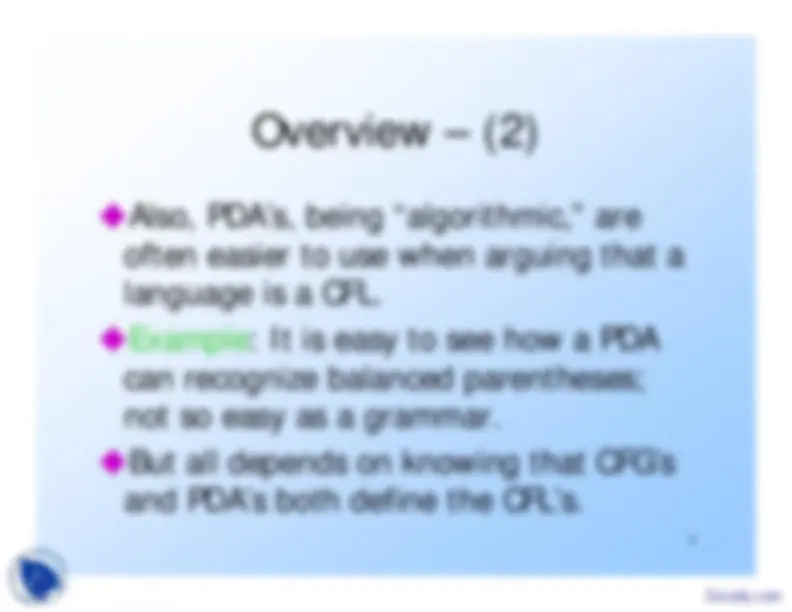
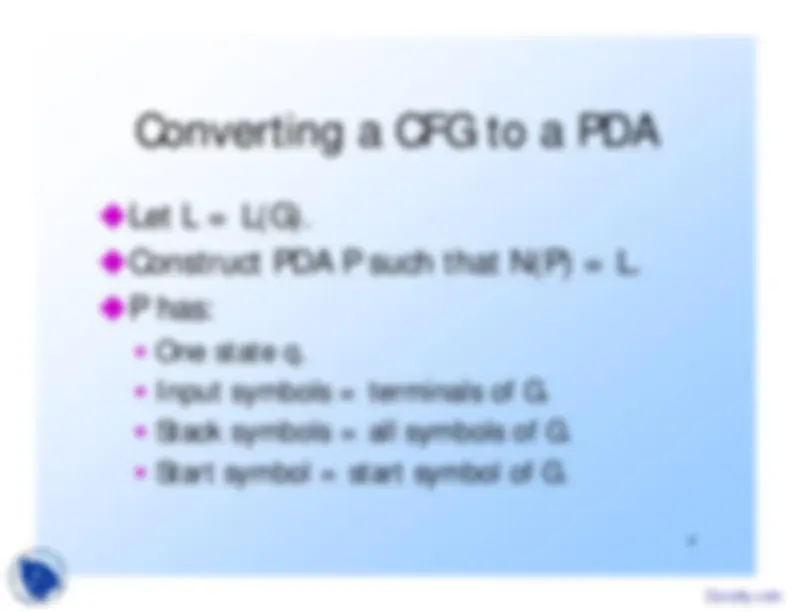
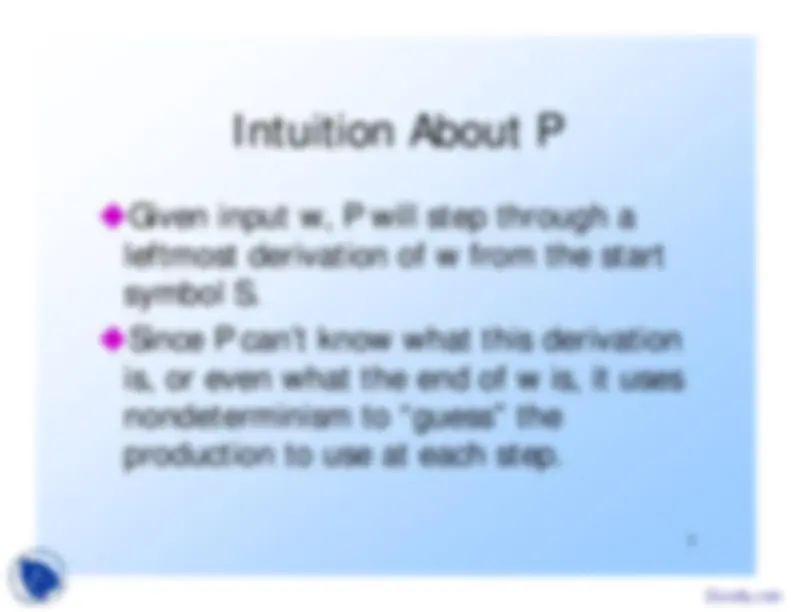
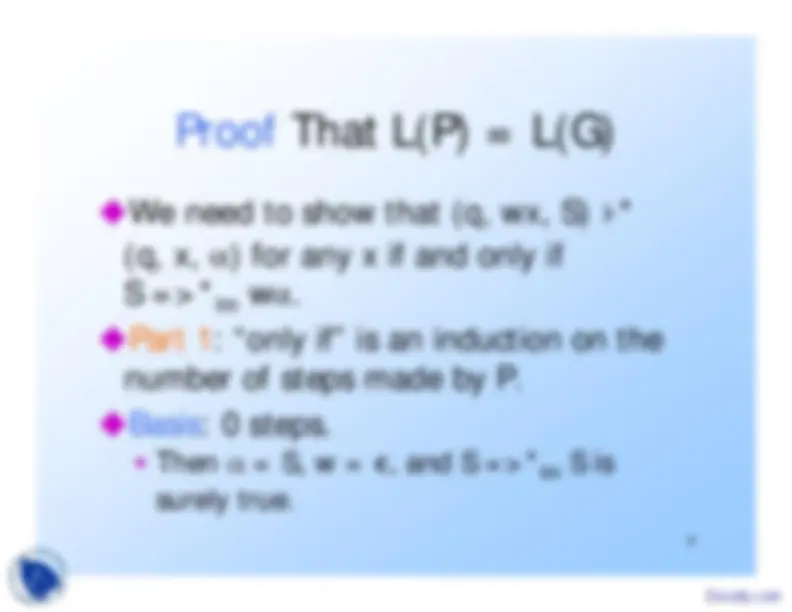
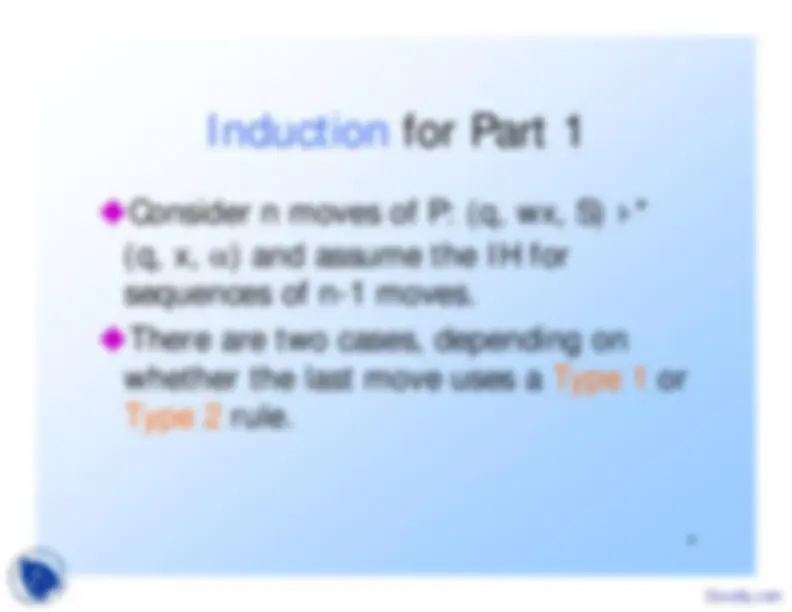

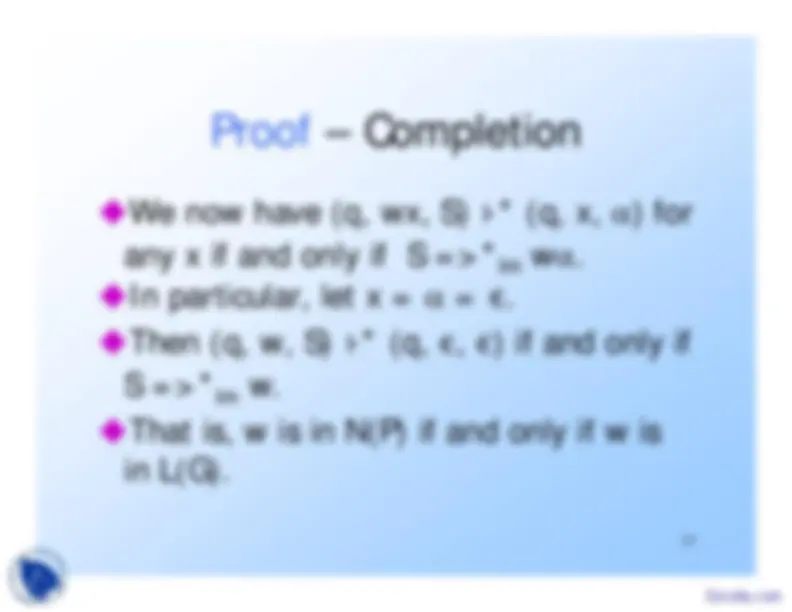
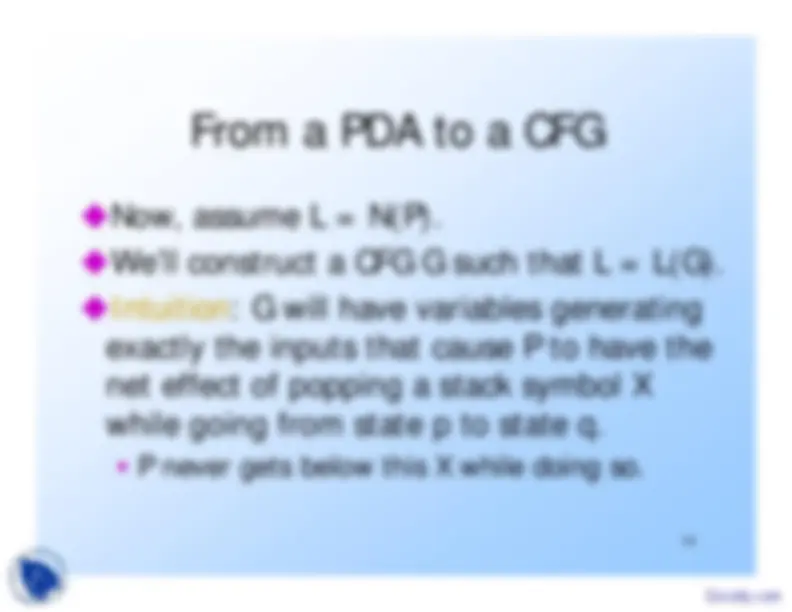
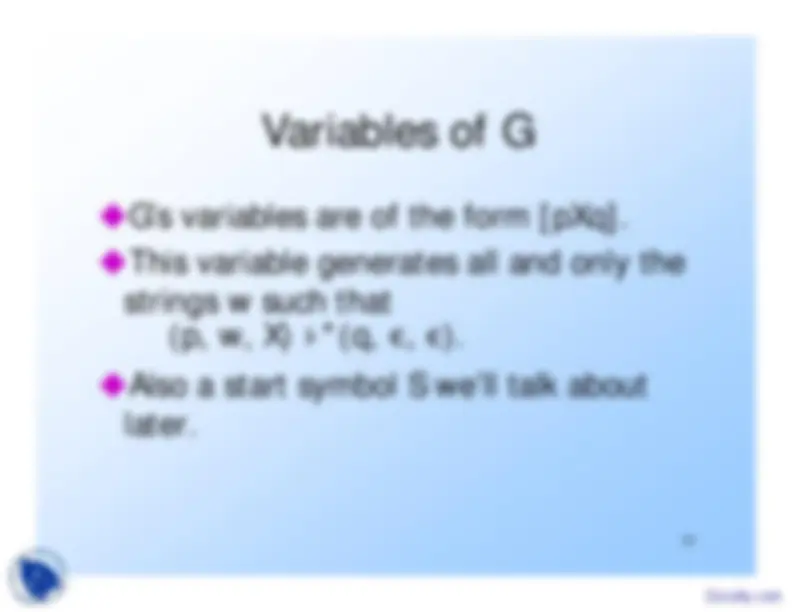
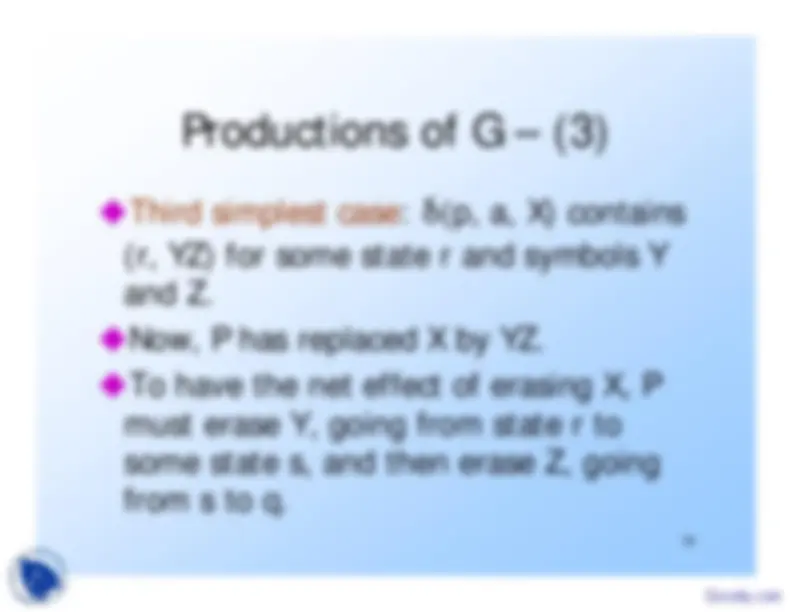
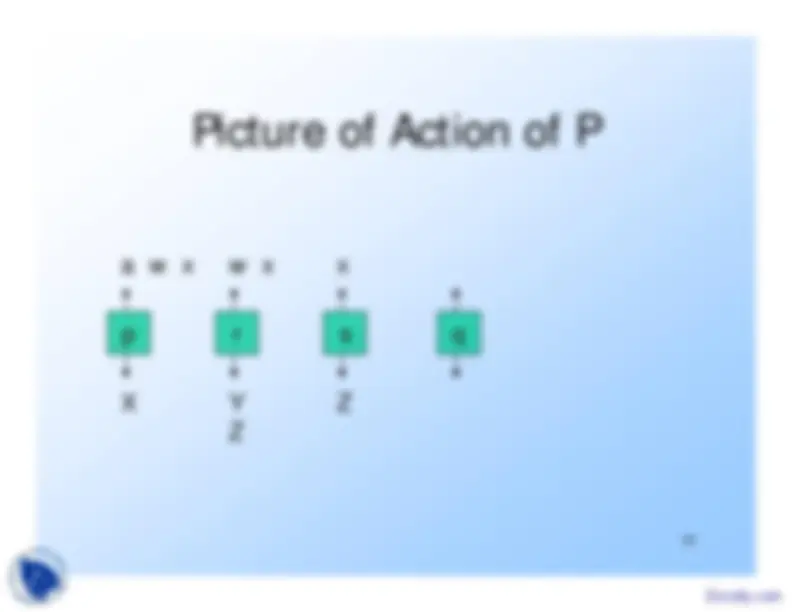
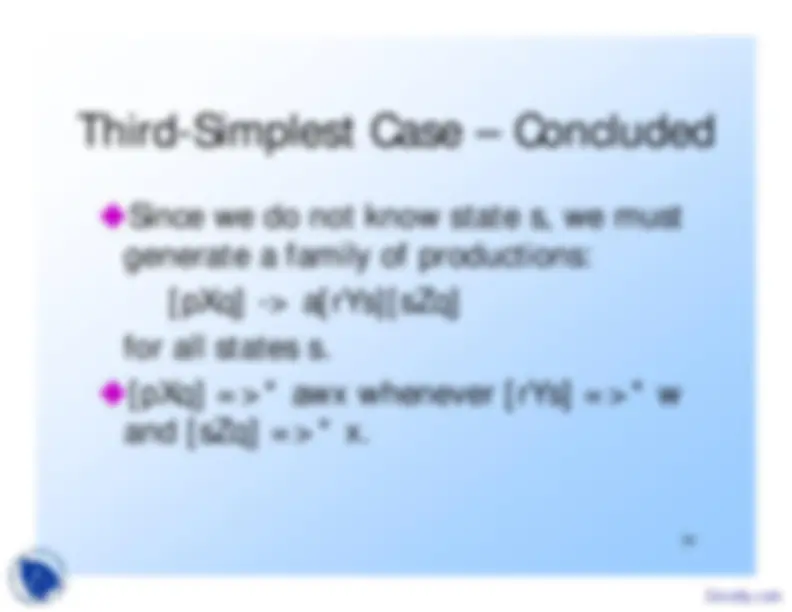
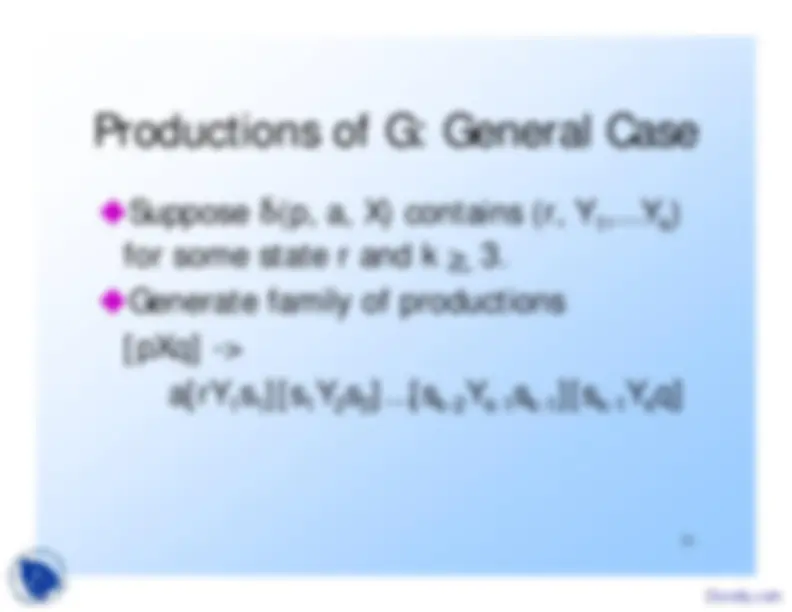
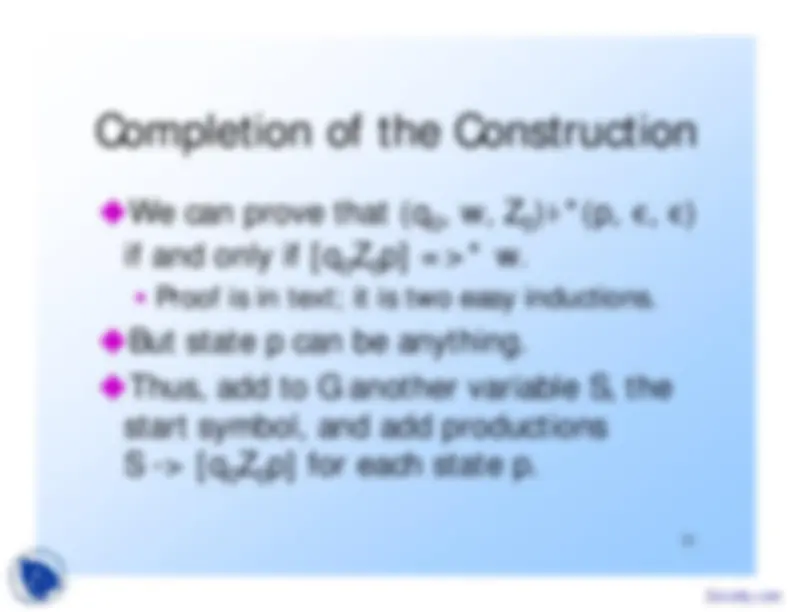


Study with the several resources on Docsity

Earn points by helping other students or get them with a premium plan


Prepare for your exams
Study with the several resources on Docsity

Earn points to download
Earn points by helping other students or get them with a premium plan
Community
Ask the community for help and clear up your study doubts
Discover the best universities in your country according to Docsity users
Free resources
Download our free guides on studying techniques, anxiety management strategies, and thesis advice from Docsity tutors
Some concept of Automata and Complexity Theory are Administrivia, Closure Properties, Context-Free Grammars, Decision Properties, Deterministic Finite Automata, Intractable Problems, More Undecidable Problems. Main points of this lecture are: Equivalence, Conversion, Regular Languages, Representations, Jump, Properties, Arguing, Recognize Balanced Parentheses, Knowing, Input Symbols
Typology: Slides
1 / 22

This page cannot be seen from the preview
Don't miss anything!















1
Conversion of CFG to PDAConversion of PDA to CFG
2
When we talked about closure properties of regular languages, it wasuseful to be able to jump between REand DFA representations.
Similarly, CFG’s and PDA’s are both useful to deal with properties of theCFL’s.
4
Let L = L(G).
Construct PDA P such that N(P) = L.
P has:
One state q.
Input symbols = terminals of G.
Stack symbols = all symbols of G.
Start symbol = start symbol of G.
5
Given input w, P will step through a leftmost derivation of w from the startsymbol S.
Since P can’t know what this derivation is, or even what the end of w is, it usesnondeterminism to “guess” theproduction to use at each step.
7
δ
(q, a, a) = (q,
ε
rules)
This step does not change the LSFrepresented, but “moves” responsibility for
a
from the stack to the consumed input.
If A ->
is a production of G, then
δ
(q,
ε
, A) contains (q,
rules)
Guess a production for A, and represent thenext LSF in the derivation.
8
We need to show that (q, wx, S)
(q, x,
) for any x if and only if
lm
w
Part 1: “only if” is an induction on the number of steps made by P.
Basis: 0 steps.
Then
= S, w =
ε
, and S =>*
lm
S is
surely true.
10
The move sequence must be of the form (q, yax, S)
(q, x,
where ya = w.
By the IH applied to the first n-1 steps, S =>*
lm
ya
But ya = w, so S =>*
lm
w
11
The move sequence must be of the form (q, wx, S)
(q, x,
where A ->
is a production and
By the IH applied to the first n-1 steps, S =>*
lm
wA
Thus, S =>*
lm
w
= w
13
We now have (q, wx, S)
) for
any x if and only if
lm
w
In particular, let x =
ε
Then (q, w, S)
ε
ε
) if and only if
lm
w.
That is, w is in N(P) if and only if w is in L(G).
14
Now, assume L = N(P).
We’ll construct a CFG G such that L = L(G).
Intuition: G will have variables generating exactly the inputs that cause P to have thenet effect of popping a stack symbol Xwhile going from state p to state q.
P never gets below this X while doing so.
16
Each production for [pXq] comes from a move of P in state p with stack symbol X.
Simplest case:
δ
(p, a, X) contains (q,
ε
Then the production is [pXq] -> a.
Note
a
can be an input symbol or
ε
.
Here, [pXq] generates
is one way to pop X and go from p to q.
17
Next simplest case:
δ
(p, a, X) contains
(r, Y) for some state r and symbol Y.
G has production [pXq] -> a[rYq].
We can erase X and go from p to q byreading
a
(entering state r and replacing
the X by Y) and then reading some w thatgets P from r to q while erasing the Y.
Note: [pXq] =>* aw whenever [rYq] =>* w.
19
a p X
w
x
r w Y Z
x
s x Z
q
20
Since we do not know state s, we must generate a family of productions:
[pXq] -> a[rYs][sZq]
for all states s.
[pXq] =>* awx whenever [rYs] =>* w and [sZq] =>* x.